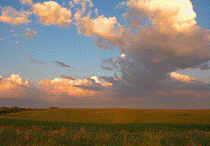North American Prairie Conference
Date of this Version
1989
Abstract
Hempstead Plains, once encompassing 24,282 hectares, originally extended from western Suffolk County, to eastern Queens County, Long Island, New York. Hicks (1892), Harper (1918), Ferguson (1925), Cain et al. (1937), and Seyfert (1972), contended that Hempstead Plains was always devoid of arboreous growth, though Bailey (1949) maintained that shrubs and trees grew on the Plains. Those who have made important vegetation studies of the Plains included Hicks (1892), Harper (1918), Ferguson (1925), Conard (1935), Seyfert (1972), and Stalter and Lamont (1987). Stalter and Lamont (1987) studied a 8.5 ha remnant in the vicinity of Mitchell Field and found little bluestem (Andropogon scoparius Michx.) and broomsedge bluestem (Andropogon virginicus L.) to be the dominant species. Switchgrass (Panicum virgatum L.), indiangrass [Sorghastrum nutans (L.) Nash], and bird-foot violet (Viola pedata L.) are remnants of the prairie flora that dominated Hempstead Plains years ago. Invasion of alien species such as crabgrasses (Digitaria spp.), foxtail grass (Setaria faberi Herrm.), and purslane (Portulaca oleracea L.) on disturbed sites reflects the changing character of the Hempstead Plains flora. The small size of the Mitchell Field site, disturbance by vehicles and dumping may hasten the very slow process of old field succession at Mitchell Field.


Comments
Published in Prairie Pioneers: Ecology, History and Culture: Proceedings of the Eleventh North American Prairie Conference, August 7-11, 1988, Lincoln, Nebraska (Lincoln, NE 1989).